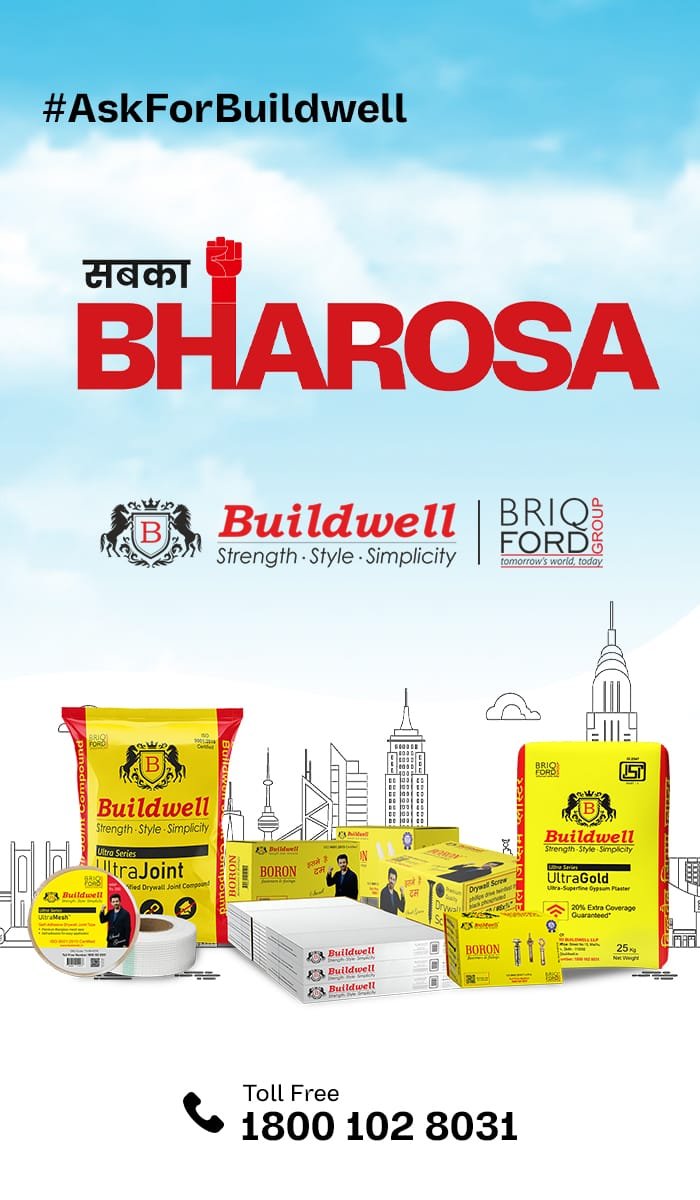Using Gypsum Plaster in India? This Field-Test Checklist Could Save You Rework
Every contractor has been there: the surface looks fine after plastering… until the paint peels, corners crack, or hairlines appear across ceilings.
And then comes the dreaded rework — wasted material, delayed timelines, and frustrated clients.
That’s why contractors across the country are changing how they evaluate Gypsum Plaster in India. Instead of relying only on supplier claims or catalog descriptions, they’re using a simple field-test checklist that reveals whether the plaster will truly hold up on Indian job sites.
If you’re responsible for ceiling prep, finishing, or post-conduit work on RCC slabs, this checklist could save your time, money, and reputation.
✅ 1. Coverage Consistency Per Bag
Test: Mix and apply a trial batch of plaster over 1 square meter. Measure the thickness and coverage area.
Why it matters: Many plasters claim high coverage, but field trials reveal the truth. If a 25 kg bag covers less area than expected, your cost shoots up. Worse, uneven thickness increases drying time and causes micro-cracks.
Buildwell Gypsum Plaster is engineered for high spreadability and even consistency — no lumps, no surprises.
That’s why it’s preferred by professionals using gypsum plaster in India across diverse climates and ceiling types.
✅ 2. Workability Window (Mixing to Application)
Test: After mixing, apply the plaster every 5 minutes and note when it starts to harden or lose plasticity.
Why it matters: Indian sites face variable delays — water shortages, labor rotation, or load shifting. A plaster that sets too quickly creates wastage and uneven application. One that sets too slow delays drying and finishing.
Buildwell’s formulation provides an optimal setting window — giving contractors flexibility without compromising final strength.
✅ 3. Surface Finish After Drying
Test: Allow the applied plaster to dry naturally and inspect for:
- Hairline cracks
- Uneven shrinkage
- Patching or discoloration
Why it matters: Cracks mean rework. Even with perfect application, low-quality gypsum plaster develops surface issues that only show up post-drying. This leads to complaints at the painting stage.
Buildwell Gypsum Plaster dries to a smooth, crack-free surface, perfect for paint or putty. Contractors report zero touch-up even after lights and fans are installed.
✅ 4. Bond Strength on RCC Ceilings
Test: Apply plaster to an RCC surface (preferably post-conduit). After 24 hours, tap or scrape gently to test adhesion.
Why it matters: Without proper bonding, plaster falls off in sheets — especially around chases or beams. This is one of the biggest pain points when using gypsum plaster in India on RCC ceilings.
When paired with Buildwell Gypsum Bond, Buildwell plaster forms a tight grip that eliminates the need for hacking or additional prep — saving hours per ceiling.
✅ 5. Compatibility with Gypsum Boards and Paint
Test: Use the plaster over Buildwell Gypsum Board and observe jointing, leveling, and finish readiness.
Why it matters: Ceiling systems are interconnected. If the plaster doesn’t match board density or jointing compound, you’ll face:
- Finish mismatch
- Cracks at board joints
- Surface absorption variations under paint
Buildwell plaster integrates cleanly with Buildwell Gypsum Board, jointing tapes, and paint systems, creating a cohesive surface that painters appreciate.
✅ 6. Rebound and Wastage Rate During Application
Test: Check how much plaster falls off the trowel during application on vertical or overhead surfaces.
Why it matters: High rebound = high wastage = higher cost.
Buildwell plaster adheres smoothly and stays where it’s applied — even on ceiling surfaces. Contractors using Buildwell report significantly less rebound and cleaner application areas.
For teams managing large areas and lean labor, this is a game-changer.
✅ 7. Drying Time Under Natural Conditions
Test: Apply and leave undisturbed in shaded, ventilated site area. Record the time it takes to fully dry and be ready for next finishing stage.
Why it matters: In India, plaster that dries too fast may crack. Too slow, and the site stalls.
Buildwell Gypsum Plaster balances this with site-tested drying rates that allow finishing teams to move in quickly — without the risk of shrinkage.
✅8. Odor and Dust During Mixing
Test: Mix a small batch and monitor if the mix emits strong odors or excessive dust.
Why it matters: Workers avoid products that cause eye irritation or respiratory discomfort — which slows down site morale and productivity.
Buildwell’s low-dust formula and non-irritating composition make it a favorite for teams who work long hours in closed spaces — especially on ceiling jobs.
Final Word: Don’t Rely on Hearsay. Test Your Plaster Before You Scale It.
Every site condition is different. From room ventilation to contractor skill level, dozens of factors affect plaster performance. That’s why the best teams don’t just trust brand labels — they run small trials before scaling up.
With Buildwell Gypsum Plaster, professionals across India have discovered:
- Fewer cracks
- Faster site progress
- Smoother finishes
- Lower material wastage
- Happier clients at handover
It’s not just about applying plaster. It’s about building confidence in every ceiling — and avoiding hidden problems that cost you later.
When you’re serious about quality and results, make sure you’re choosing the right gypsum plaster in India — one that’s been tested where it matters: on site.
📞Get in Touch with Buildwell Today:
💬 WhatsApp: 7900336699
📞 Toll-Free: 1800 102 8031





